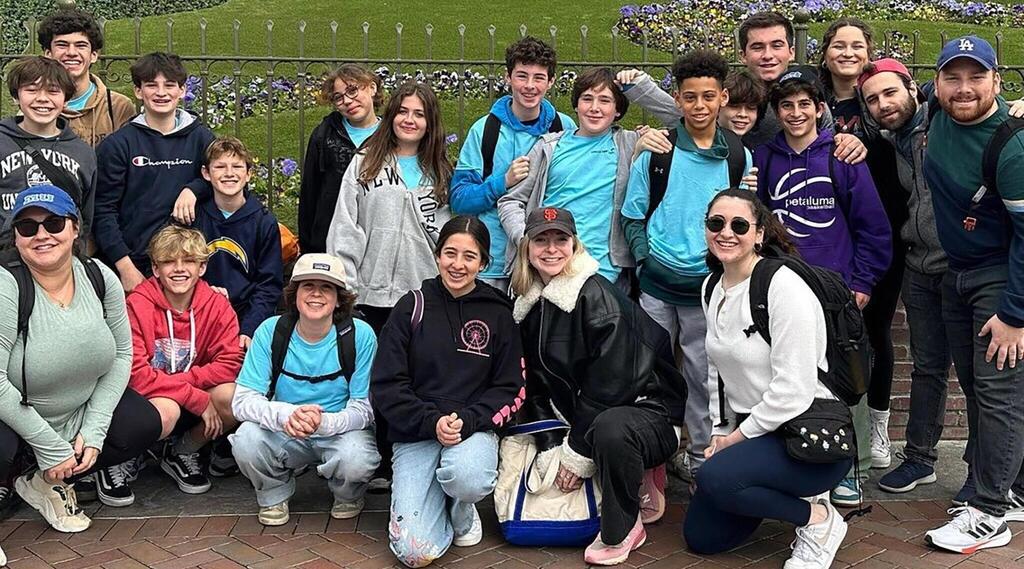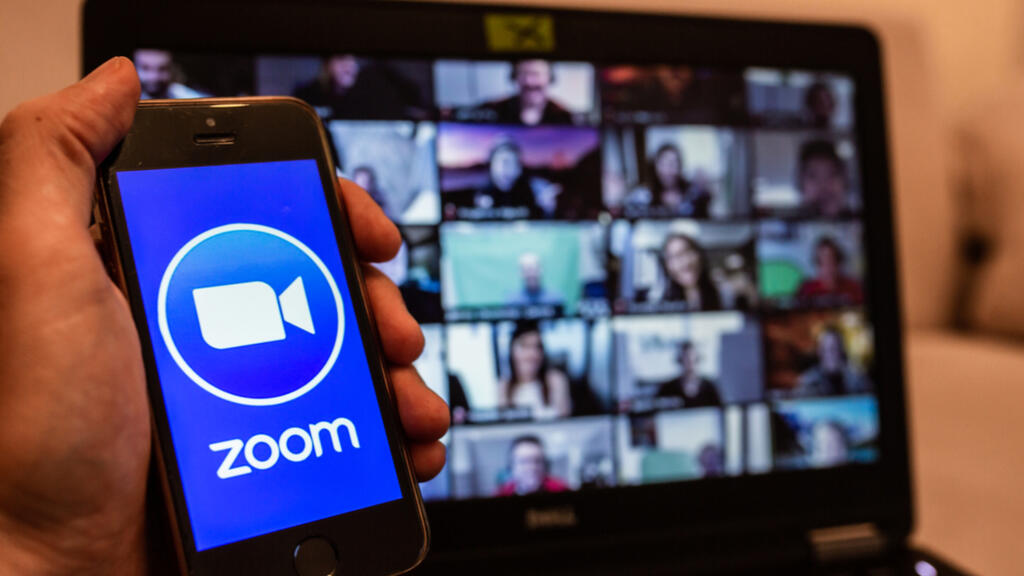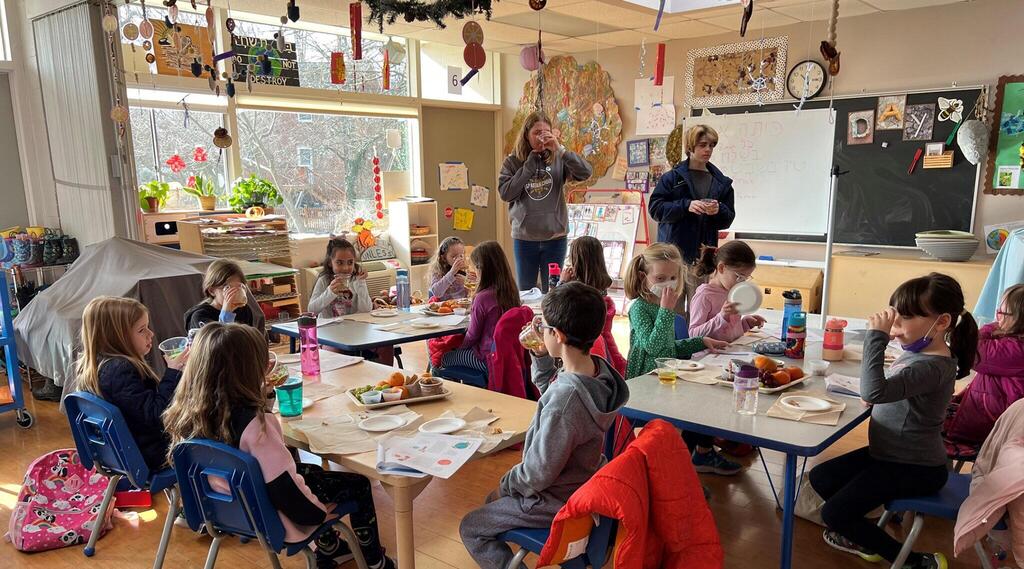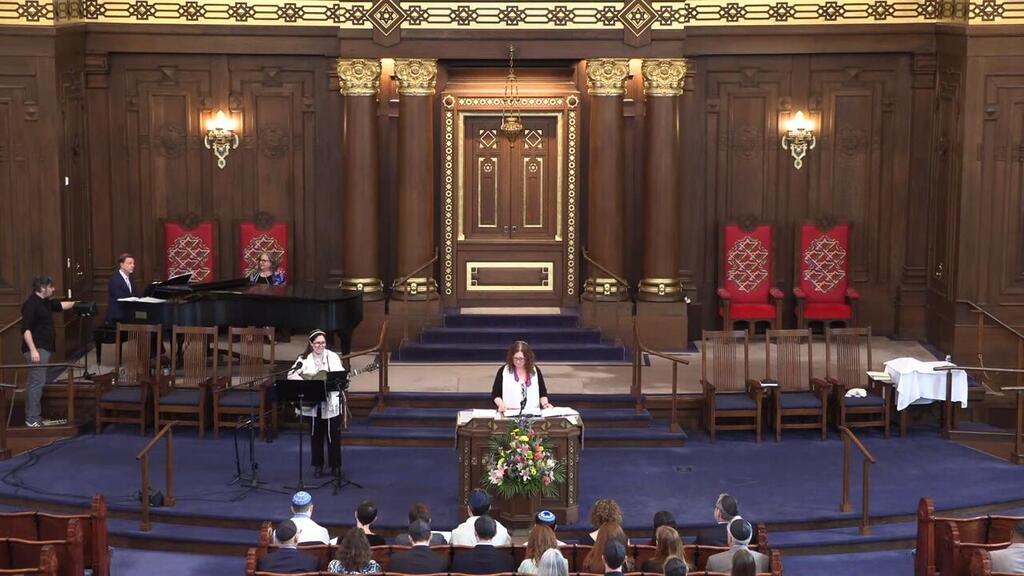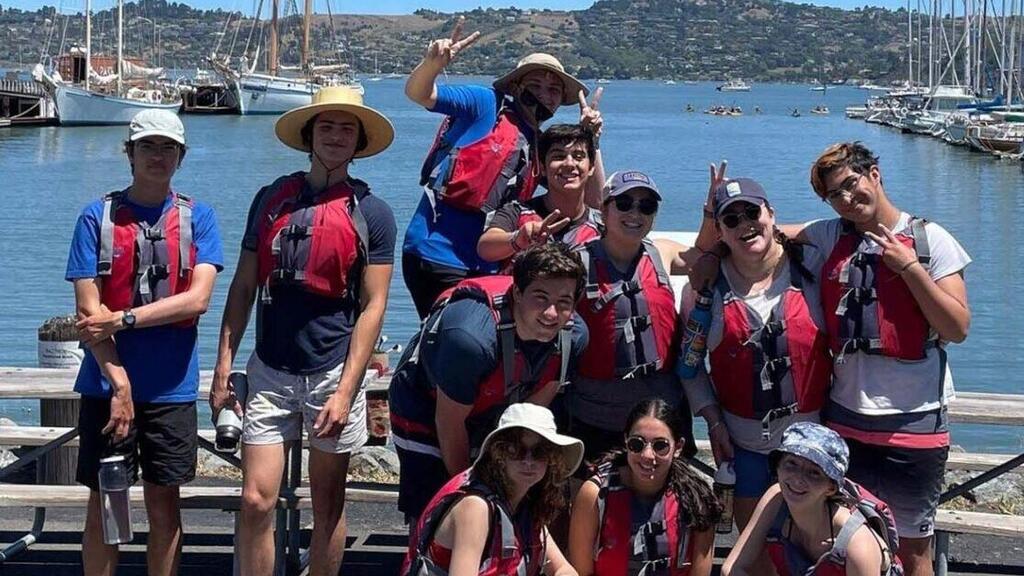Getting your Trinity Audio player ready...
Jordy Levy, 18, remembers sitting at the table with his family, enjoying a relaxed Shabbat dinner at his Atlanta home during the pandemic. There was no hassle of getting dressed up, no schlep to synagogue, just hanging out and spending time with his family. In the background, a Facebook livestream of his congregation’s Friday night services played.
Related stories:
This is a scene that has become largely familiar over the course of the pandemic. COVID-19 forced many synagogues to close their doors and move their services and programs to virtual platforms. Many synagogues saw overall engagement grow as a result of this shift.
And yet for many Jewish teens, Levy’s experience was the exception. The technology, which in some ways made connecting with synagogues more convenient, caused a loss of connection among teens that has lingered even now that most congregations are back in person.
“I know a lot of kids just stopped going to synagogue outright because with COVID-19 they were so used to not going,” said Jill Mankosky, 18, a member of the Conservative Agudas Achim Congregation in Alexandria, Virginia. “This year when the High Holiday services were in person again, I noticed a lot of my classmates who would have been there previously pre-COVID-19 were just not there anymore.”
Congregations are now at a crossroads, determining which direction they want to move in next as the world slowly transitions away from the pandemic.
“Return back to normal is a bad way to phrase it because there is really no normal,” said Maya Kamenske, 16, a member of Agudas Achim.
Especially for Conservative congregations like Kamenske’s, the switch to online prayer was a significant one. In 2001, the Conservative movement’s Jewish law committee prohibited counting someone participating in an online manner towards the prayer quorum, or minyan needed for communal prayer. Virtual services initially breached this decision, although the ruling was soon amended to allow virtual Shabbat services during the pandemic.
Virtual services increased accessibility by making it simpler for people who would otherwise struggle to be at the congregation to still participate. For example, Jonah Golbus, 17, said that there were times when he was unable to find a ride to his synagogue, Rodef Sholom in San Rafael, California. Now, he does not have to worry about that. Virtual services allow people more flexibility for participation, and can be squeezed more easily into schedules.
“Having [online] High Holiday services as an option for those who [either] can’t or don’t feel up to coming in person is a really good addition that I’m glad we’ve kept,” said Mankosky. “I’m hoping it continues because, for example, when I’m in college, I can’t come back for Rosh Hashanah and Yom Kippur services, but I’d still like to attend the services of [my] synagogue. Having an option to do them on Zoom from my dorm or something would be really helpful.”
Many synagogues saw a definite spike in participation and engagement of their members overall after implementing virtual services made participation simpler. This was not the case for teen programs, though. Many teens interviewed for this article reported that engagement dropped when it went digital.
Kira Rodriguez, a senior in high school and member of the Rodef Sholom congregation, tried to stay involved after Rodef Sholom went virtual, and attended a number of virtual activities for the first few months. Eventually, it just became too much.
“I was just so mentally exhausted from always being on Zoom,” said Rodriguez. “I couldn’t take another two hours of it [for the teen activities].”
Golbus, who struggled to find rides to Rodef Sholom, said that he was never really engaged on Zoom, so he did not attend any of the virtual programming during the pandemic. Now that he has friends who are in-person again, he has become more active in his congregation. Still, the events look different than they used to.
“It’s not as crowded as it used to be,” said Golbus. “There’s less people I know, so there’s less of an incentive on my end to go to these [activities].” He said that it is just less of a habit to go to temple now than it used to be before the pandemic, even if people are slowly reverting back to how it was.
The pandemic-related loss of in-person interactions damaged teens’ social connections within their congregations. While some teens returned to their congregations as they began to open back up, others never did.
Mankosky also blames the decline in participation to her and her peers starting high school and becoming increasingly busy. What is normally a period fraught with change for teens became, in many instances, even more challenging as COVID-19 took its toll. She is not alone in feeling more disconnected from her peers.
“I remember there was a really communal aspect to the congregation before. My religious school class [and I] were really really close. We often invited each other to our birthday parties outside of religious school, even though most of us didn’t even go to class together,“ said Jacob Bensen, 15, about Agudas Achim. ”It was almost like having a second family.” Now, he says, this has fallen to the wayside as the class has mostly lost touch since COVID-19. Most people haven’t put in the effort to reconnect since returning in-person.
Mila Einspruch, 16, had a different experience with Zoom during the pandemic. Prior to COVID-19, she said that she was on the track towards dropping all involvement with her congregation, Temple Sinai, in Oakland, California. With virtual school, Einspruch was unable to hang out with people as she had before. Her Reform congregation had a monthly Zoom club for eighth graders aimed at engaging and conversing. It was such an enjoyable experience that she became more involved in her congregation after it opened back up.
Yet even for those like Einspruch who returned, the community still feels different than it used to.
“Now, everything’s a little bit more fragmented,” said Einspruch. “The biggest thing that’s blocking people from coming [to temple] is just [that] those [social] connections are gone.”
Despite all of this, Rodriguez saw a spike in attendance following COVID-19 at her Reform congregation, Rodef Shalom, as there was a lot of initial excitement to be back in the building together. She said that faded within a couple of months as the initial novelty wore off. Now, there are odd gaps in ages between the teens. There are few freshmen and sophomores that show up, whereas the upperclassmen, like herself, are more likely to participate in activities. A few teens weighed in on why this is happening.
“It feels like there’s this gap of time where I would have started to get more involved after eighth grade into freshman year where there’s this transition of becoming older and going to those activities [beyond religious school], but then that’s when COVID-19 hit for me,” said Adina Golbus, 17, belongs to Rodef Sholom with her brother Jonah. “COVID-19 I think had a part in [me not going to as many activities] because it kind of prevented that transition period.”
All of the trips and activities planned to ease this transition were canceled, exacerbating the rate at which teens stopped being active members in their congregations. Einspruch had a similar experience with the lack of structure.
“Straight out of our bar and bat mitzvahs, there would have been some scaffolding and structure [to motivate teens] to join the teen program,” Einspruch said. COVID-19 dismantled that.
However, Rodriguez said that the number of middle schoolers, particularly seventh graders, has shot up. Einspruch saw the same at Temple Sinai. Neither could point to a reason for the engagement.
Rudy Brandt, the director of youth engagement at Congregation Rodef Sholom, said that the pandemic was particularly tough for teens, so her goal was to design a no-pressure model of youth engagement where teens were able to engage when and how they wanted. To do this, she offered activities across the spectrum, from Get Out the Vote efforts on Zoom to movie conversations to cooking. Much of this is still the case even in-person.
Rodriguez, who also belongs to the Rodef Sholom congregation, said that these programs were particularly successful with the younger teens, and could be a part of why there were so many of them. Despite this, the revamped programming has not seen the same effects with the older kids. In an attempt to communicate and connect more with teens, Brandt and her colleagues have grown their social media footprints.
“[It’s] just kind of meeting teens where they are, trying to put, you know, what’s happening in our spaces in their faces via social media,” Brandt said.
This greater presence has been somewhat successful at encouraging teens to participate in their various youth programs.
“There have been some events that I didn’t go to when I saw [the posts on social media] it was like, I kind of wish I went to that. Maybe I’ll go to the next one,” said Golbus.
Rodef Sholom is not the only congregation that has changed their youth programs to see more engagement. Chaya Silver, the youth director at Agudas Achim Congregation in Alexandria, Va., is currently working on developing a hybrid program for the religious school at her congregation, with the goal of making it more inclusive and flexible for students and their families.


